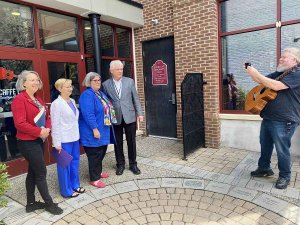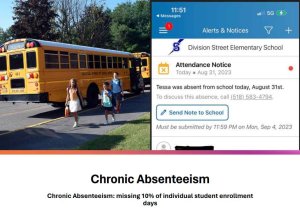Friday, 21 October 2016 10:18
Rethinking Homework in the 21st Century
SARATOGA SPRINGS — Not long ago, social media blew up when a teacher in Houston wrote a letter to her student’s parents to let them know she would not be sending homework home. She suggested instead that the 2nd grade child spend quality time with the family.
The quantity of homework a student should take home has long been a controversy that is often rooted in the experience of the parents. Some were inundated with hours of homework from a young age, others with almost none, and many of them grew up with a sense that their experience was the norm.
Today, there are numerous child development studies that show that the younger the child, the less homework they should have. Learning below the age of fourth graders is often experiential, done with sight, touch and other senses. Additionally, the early years are formative for socialization and family bonding, something that can be disrupted if the child is spending more time bending over a worksheet than out discovering life with family and friends.
According to Matthew Kopans, director of community relations and development at the Waldorf School of Saratoga Springs, Waldorf does not begin providing homework until the fourth grade.
“Kids that age aren’t developed enough to work like that, and need time to rest,” he said. “We think it helps them develop willpower to remember their lessons. Lessons are like a full meal and they need time to digest it in order to remember what you taught them in class.”
Kopans said that children develop to the point where they want to express themselves individually, and at that point, homework becomes more meaningful to them. “By waiting,” he said, “they are excited to do homework. They look forward to it. By taking some things slowly, it helps make students really hungry for more, rather than turning homework into drudgery.”
Doug Silvernell, assistant superintendent for 21st century teaching and learning at the Saratoga Springs School district, said that the district also incorporates such studies into their homework policies, and that public schools have quite a bit of freedom in determining homework policy.
“The State Education Department doesn’t give us a regulation, they don’t handcuff us one way or the other,” he said. “They may give recommendations based on research, and as a general rule, it [homework] increases slightly depending on age.”
Silvernell said that the district also gives teachers freedom around homework decision-making. “It’s important to know the students,” he said. “When I was a teacher, I used to tell my students, if you go beyond “x” number of minutes doing homework, just stop and we’ll talk about it tomorrow, because every student is different, and every class is different. We give them general guidelines to follow about the general minutes they want to give. The policy is discussed at each building level. We revisit it every couple of years, but discuss it annually with staff. We all bring our own experiences and expectations to it. We’ve learned that what may be way too much for someone might not be nearly enough for someone else.”
A concern Kopans has heard from parents is that kids come home, eat quickly, go to bed, and are really stressed and overwhelmed. “Important parts of childhood are getting lost,” he said. “We get so driven by results, and there is pressure on teachers to be exactly where they are supposed to be for their students’ development, and they are cramming more and more into a day.”
Kopans said that to some extent there is a concern, seen in the U.S. as well as in other countries following the heavy homework line of thinking, that although kids can do well on drills and tests, they are losing competitively because kids aren’t creative, they can’t think outside the box. Time after school for play and family bonding is a necessary component to child development.
For anyone that tells Kopans that kids need more homework to better prepare for college, he says, “Fortunately, they go to college after 12th grade, not fourth grade. At 17 they can handle the workload and schedule themselves. A third grader can’t do that.”
For more information about Waldorf Schools, visit www.waldorfsaratoga.org. For more information about Saratoga Springs schools, visit www.saratogaschools.org.




























 How to resolve AdBlock issue?
How to resolve AdBlock issue? 









